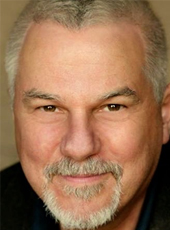Abstract
Too often, language textbooks (and textbooks in general) deal with narrow certainties and absolutes: “How are you?” “I am fine”. This leaves teachers the task of addressing the language of uncertainty and ambiguity in measuring doubt, exploring hypothetical situations, identifying bias, hedging ideas, as well as in differentiating among opinions, beliefs, and facts. Helpful in addressing these issues in language learners’ toolboxes are clarification and disambiguation strategies, but teachers first need to make space in their classrooms and tasks for discourse around uncertainty and ambiguity. This session outlines the issues and offers practical advice for helping teachers help students face the complexities of the world outside the classroom.
About the Speaker


Ken Beatty
Dr. Ken Beatty, Anaheim University TESOL Professor, has worked in secondary schools and universities in Asia, the Middle East, and North and South America, lecturing on language teaching and computer-assisted language learning from the primary through university levels. Author of 67 textbooks for Pearson, he has given 300+ teacher-training sessions and 100+ conference presentations in 33 countries. His most recent books are Learning English for Academic Purposes for Pearson Canada.

